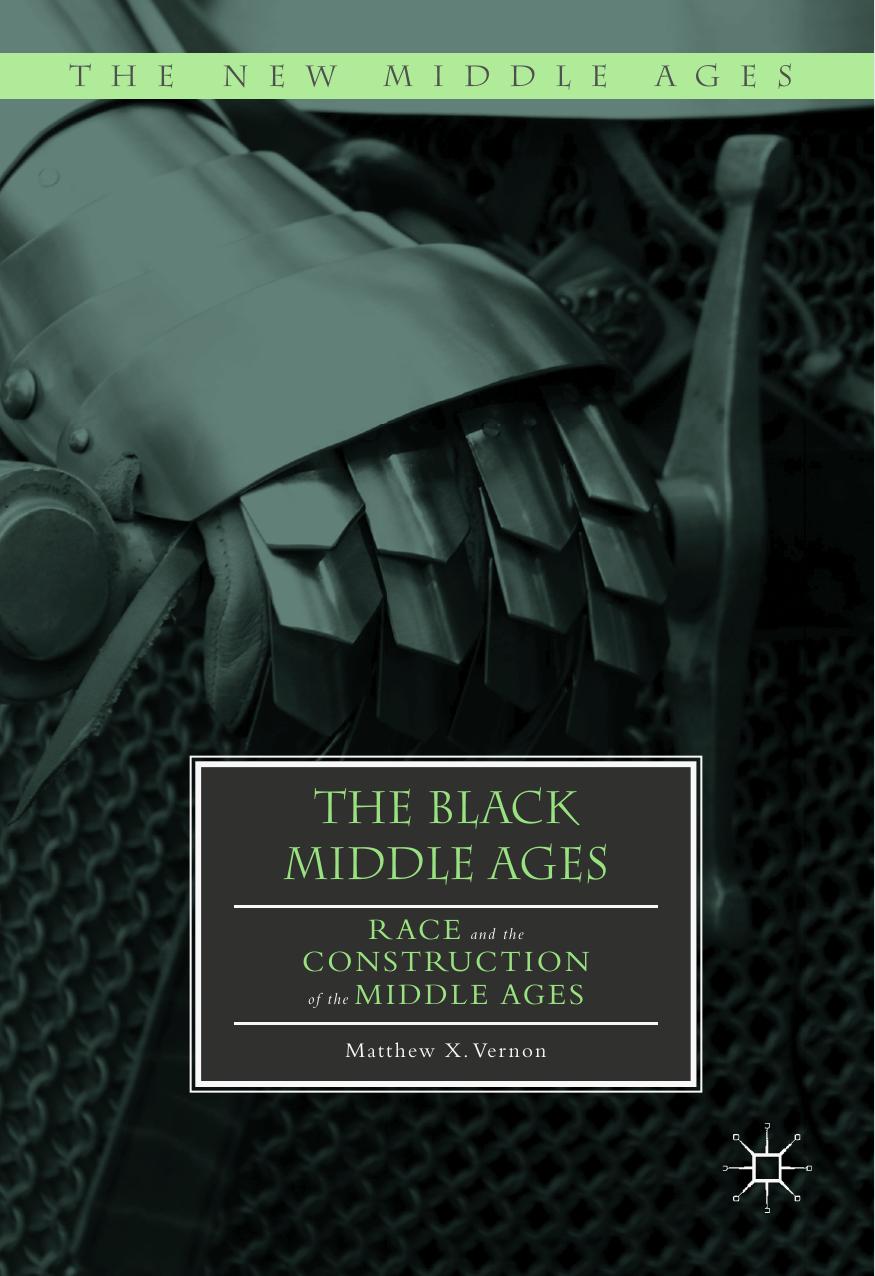The Black Middle Ages by Matthew X. Vernon

Author:Matthew X. Vernon
Language: eng
Format: epub, pdf
Publisher: Springer International Publishing, Cham
One could go as far to read the discrepancy between the sophistication of the frame narrative and the simplicity of the folk tale as a hopeful assessment of the social progress made from the pre- to post-war United States.
These tales demonstrate Chesnutt’s ability to use narrative structure to make temporal and political claims. Genre and form enable the literary interventions Chesnutt of his early work, which lends special significance to his turn from the vernacular tale to a realist novel that draws on romance. Whereas Twain chose Sir Thomas Malory’s Le Morte d’Arthur over Scott’s Ivanhoe to locate his critique at the heart of Arthurian mythology, Chesnutt directly engages Scott, who cast a long shadow over African-American medievalism. Malory, as interpreted by Twain, gives a lie to the foundation of American medievalism, but nineteenth-century America itself is often kept at the remove of metaphor and analogy. Fittingly, the novel is considered an example of science fiction because its time-travel conceit enables speculation that does not have an isomorphic relationship to the nineteenth century. Chesnutt is similarly making a speculative intervention into the American past under the guise of Rowena Warwick as a reification of the romance tradition derived from Scott.
Chesnutt hints at the type of speculation he will engage in through “The Wife of his Youth” (1898), his story about a financially successful mixed-race man named Mr. Ryder who is on the verge of proposing marriage to a young woman “whiter than he.”97 Ryder searches for a poem to commemorate the occasion and settles on Tennyson’s “Sir Launcelot and Queen Guinevere: A Fragment” (1842). His preparations are interrupted by an encounter with a woman who claims that over the course of twenty-five years she sought her husband from whom she was separated shortly before the Civil War. The story emphasizes that this marriage was a “slave marriage,” implying that the expectations of commitment were fundamentally different than those made after emancipation. In the novel’s last lines Mr. Ryder reveals the strange woman to be “the wife from his youth.” Cynthia Wachtell has suggested that the wife’s speech to her husband, which seems too knowing about Mr. Ryder’s current circumstances, is an elaborate performance of vernacular trickster fiction in keeping with The Conjure Woman stories and a longer line of African-American folk tales.98 The danger of such a reading is the allure of its explanatory power, that this story reproduces a set of values around and within his fiction about what is to be privileged, namely that he cannot depart from the generic groves of vernacular fiction. Mr. Ryder leads a society of mixed-race people called “The Blue Veins,” an allusion to the whiteness of their skin and their desire for future generations to become lighter. Ryder laments the inbetween-ness of being insufficiently white and unwilling to be considered black: “The one doesn’t want us yet, but may take us in time. The other would welcome us, but it would be for us a backward step.”99 If this story is read
Download
This site does not store any files on its server. We only index and link to content provided by other sites. Please contact the content providers to delete copyright contents if any and email us, we'll remove relevant links or contents immediately.
| African | Asian |
| Australian & Oceanian | Canadian |
| Caribbean & Latin American | European |
| Jewish | Middle Eastern |
| Russian | United States |
4 3 2 1: A Novel by Paul Auster(11034)
The handmaid's tale by Margaret Atwood(6836)
Giovanni's Room by James Baldwin(5871)
Big Magic: Creative Living Beyond Fear by Elizabeth Gilbert(4718)
Asking the Right Questions: A Guide to Critical Thinking by M. Neil Browne & Stuart M. Keeley(4566)
On Writing A Memoir of the Craft by Stephen King(4205)
Ego Is the Enemy by Ryan Holiday(3982)
Ken Follett - World without end by Ken Follett(3968)
The Body: A Guide for Occupants by Bill Bryson(3789)
Bluets by Maggie Nelson(3705)
Adulting by Kelly Williams Brown(3663)
Guilty Pleasures by Laurell K Hamilton(3578)
Eat That Frog! by Brian Tracy(3506)
White Noise - A Novel by Don DeLillo(3430)
The Poetry of Pablo Neruda by Pablo Neruda(3358)
Alive: The Story of the Andes Survivors by Piers Paul Read(3302)
The Bookshop by Penelope Fitzgerald(3221)
The Book of Joy by Dalai Lama(3212)
Fingerprints of the Gods by Graham Hancock(3206)
